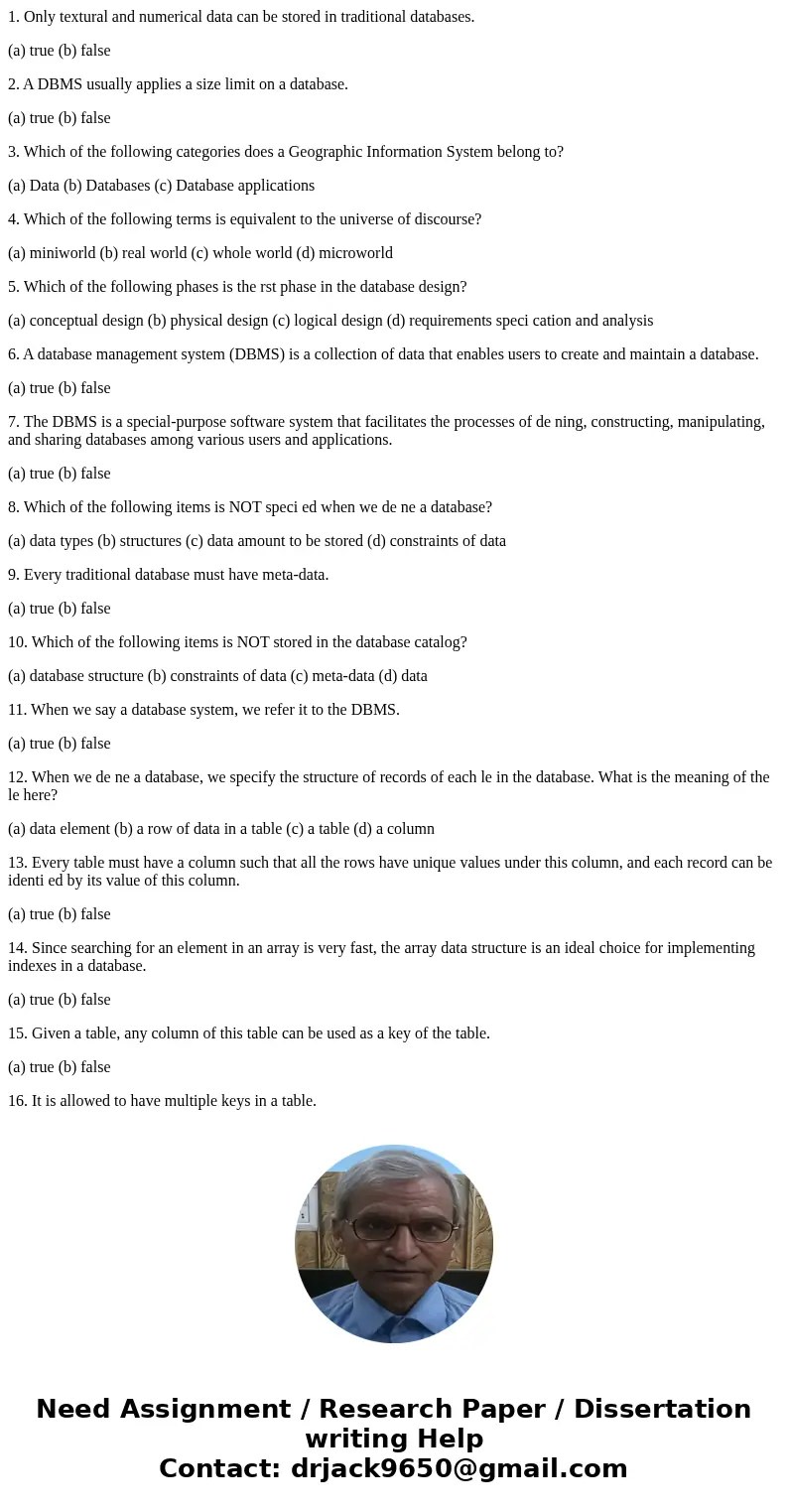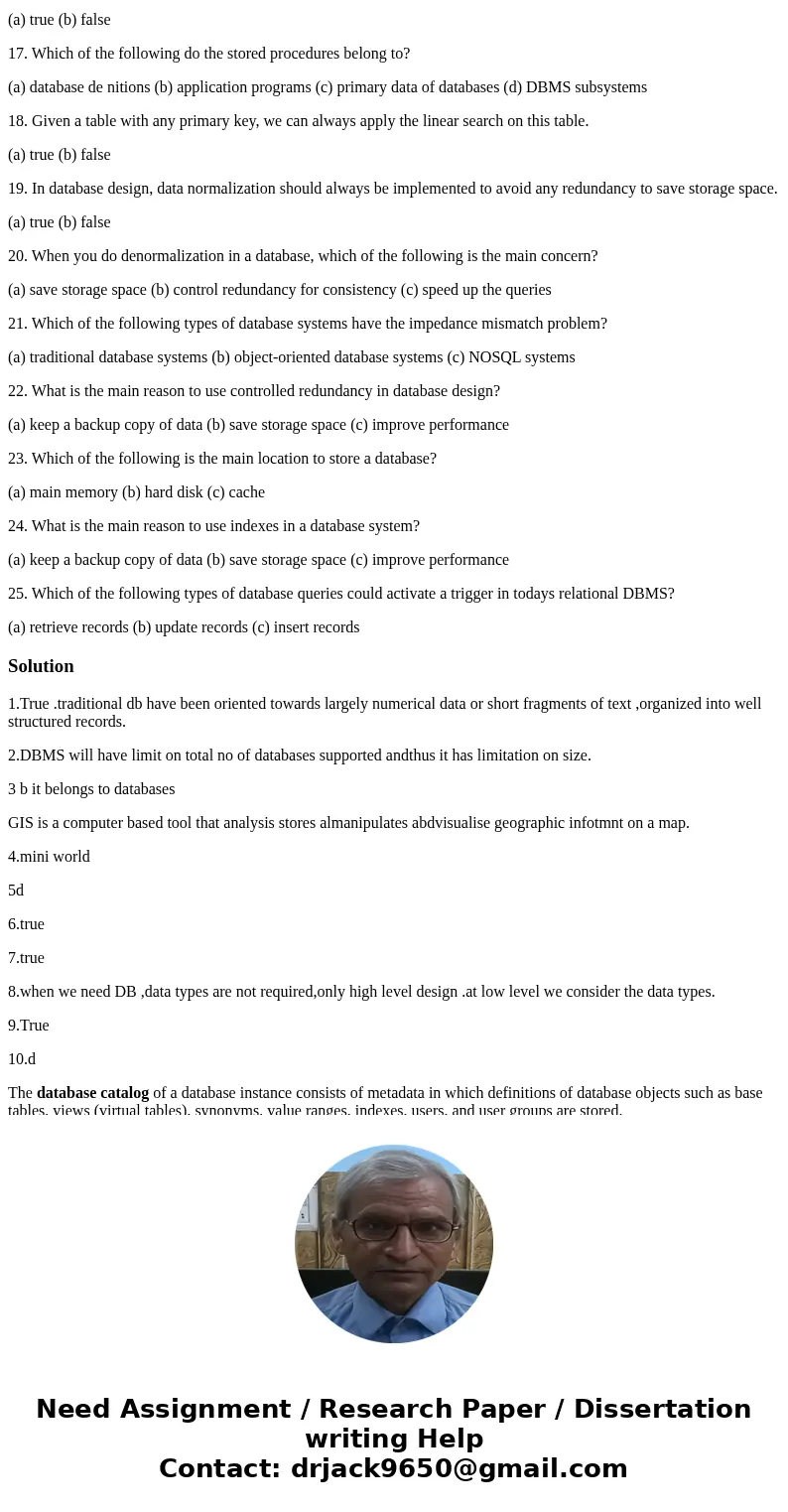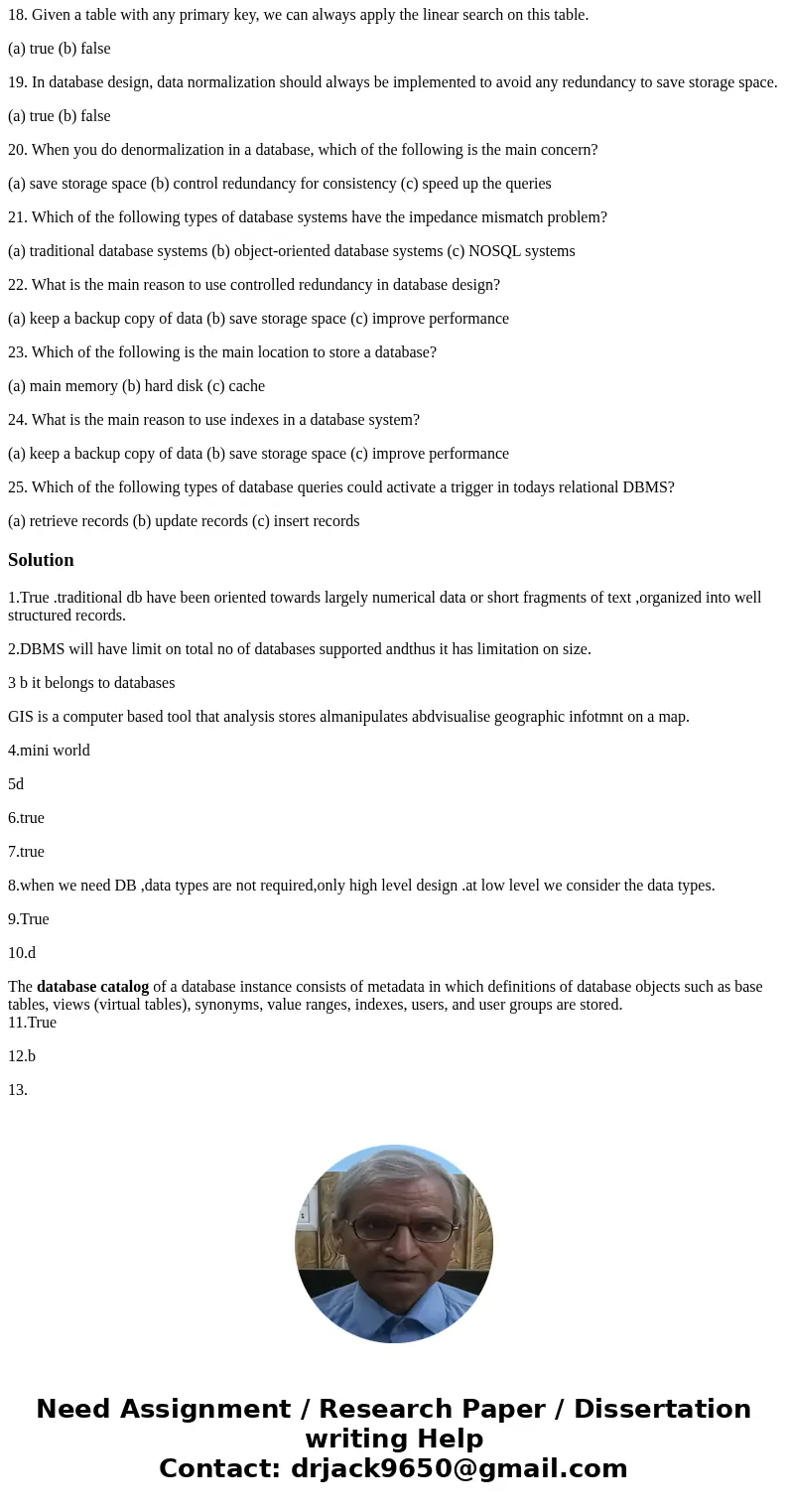1 Only textural and numerical data can be stored in traditio
1. Only textural and numerical data can be stored in traditional databases.
(a) true (b) false
2. A DBMS usually applies a size limit on a database.
(a) true (b) false
3. Which of the following categories does a Geographic Information System belong to?
(a) Data (b) Databases (c) Database applications
4. Which of the following terms is equivalent to the universe of discourse?
(a) miniworld (b) real world (c) whole world (d) microworld
5. Which of the following phases is the rst phase in the database design?
(a) conceptual design (b) physical design (c) logical design (d) requirements speci cation and analysis
6. A database management system (DBMS) is a collection of data that enables users to create and maintain a database.
(a) true (b) false
7. The DBMS is a special-purpose software system that facilitates the processes of de ning, constructing, manipulating, and sharing databases among various users and applications.
(a) true (b) false
8. Which of the following items is NOT speci ed when we de ne a database?
(a) data types (b) structures (c) data amount to be stored (d) constraints of data
9. Every traditional database must have meta-data.
(a) true (b) false
10. Which of the following items is NOT stored in the database catalog?
(a) database structure (b) constraints of data (c) meta-data (d) data
11. When we say a database system, we refer it to the DBMS.
(a) true (b) false
12. When we de ne a database, we specify the structure of records of each le in the database. What is the meaning of the le here?
(a) data element (b) a row of data in a table (c) a table (d) a column
13. Every table must have a column such that all the rows have unique values under this column, and each record can be identi ed by its value of this column.
(a) true (b) false
14. Since searching for an element in an array is very fast, the array data structure is an ideal choice for implementing indexes in a database.
(a) true (b) false
15. Given a table, any column of this table can be used as a key of the table.
(a) true (b) false
16. It is allowed to have multiple keys in a table.
(a) true (b) false
17. Which of the following do the stored procedures belong to?
(a) database de nitions (b) application programs (c) primary data of databases (d) DBMS subsystems
18. Given a table with any primary key, we can always apply the linear search on this table.
(a) true (b) false
19. In database design, data normalization should always be implemented to avoid any redundancy to save storage space.
(a) true (b) false
20. When you do denormalization in a database, which of the following is the main concern?
(a) save storage space (b) control redundancy for consistency (c) speed up the queries
21. Which of the following types of database systems have the impedance mismatch problem?
(a) traditional database systems (b) object-oriented database systems (c) NOSQL systems
22. What is the main reason to use controlled redundancy in database design?
(a) keep a backup copy of data (b) save storage space (c) improve performance
23. Which of the following is the main location to store a database?
(a) main memory (b) hard disk (c) cache
24. What is the main reason to use indexes in a database system?
(a) keep a backup copy of data (b) save storage space (c) improve performance
25. Which of the following types of database queries could activate a trigger in todays relational DBMS?
(a) retrieve records (b) update records (c) insert records
Solution
1.True .traditional db have been oriented towards largely numerical data or short fragments of text ,organized into well structured records.
2.DBMS will have limit on total no of databases supported andthus it has limitation on size.
3 b it belongs to databases
GIS is a computer based tool that analysis stores almanipulates abdvisualise geographic infotmnt on a map.
4.mini world
5d
6.true
7.true
8.when we need DB ,data types are not required,only high level design .at low level we consider the data types.
9.True
10.d
The database catalog of a database instance consists of metadata in which definitions of database objects such as base tables, views (virtual tables), synonyms, value ranges, indexes, users, and user groups are stored.
11.True
12.b
13.



 Homework Sourse
Homework Sourse